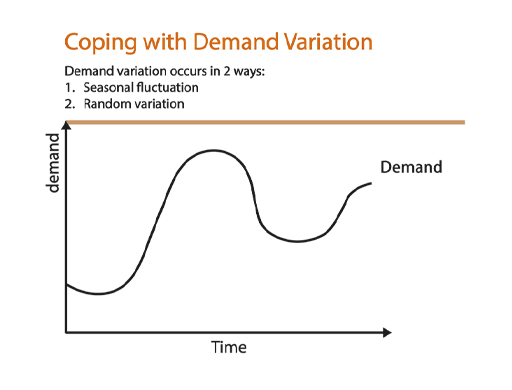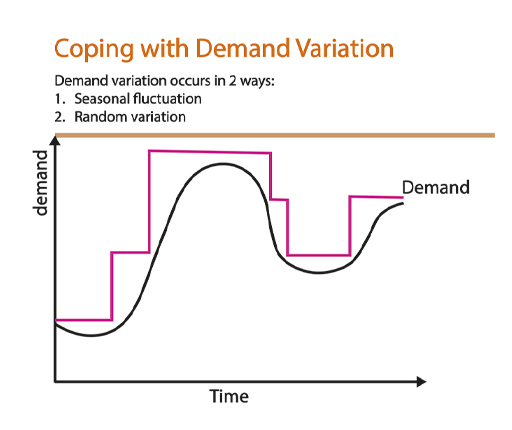9 Level and chase capacity strategies
When demand patterns are understood a service can decide when and how much capacity to provide to meet that demand. Where demand fluctuates there is the question ‘to what extent do we change capacity over time to match demand?’ This section looks at the reasoning that addresses this question.
Activity 9 Demand over time
The figure below shows the expected demand over a period of time, e.g. one year. You can see there is quite a lot of seasonal variation in expected demand.
The figure also shows a potential ‘capacity strategy’ that provides a constant amount of capacity throughout the year – known as a level capacity stategy. What do you think the likely advantages and disadvantages of this strategy are?
Answer
The level strategy is not good at minimising wasted or idle resource as there are long periods where capacity significantly exceeds demand. A key advantage is that the plan should always meet demand – as long as the demand forecast used is reasonably accurate. Another simple feature is that the plan is quite easy to implement as the people involved in organising resources know that they need to keep the resource plan the same throughout the year.
Now let’s look at a different capacity strategy. In this case the capacity is adjusted periodically so that it matches more closely the profile of forecast demand. This is known as a chase strategy. Is this always a better approach?
The resources in this case have higher utilisation and you would expect this to be more efficient. However, this is not always the case. The key issue is that changing the capacity can be difficult to implement in some cases – think about how we might do this: Seasonal staff? Different shift patterns? Agency staff?
In some of these cases the extra resource might be more expensive and less productive than those on long-term contracts. Hence we sometimes have to balance between the stability of level strategies and the complexity of chase.
The following screencast explains the theory of level and chase capacity strategies in more detail.

Transcript: Screencast 1: Level and Chase
The next section looks at how you might visualise data such as demand patterns.


